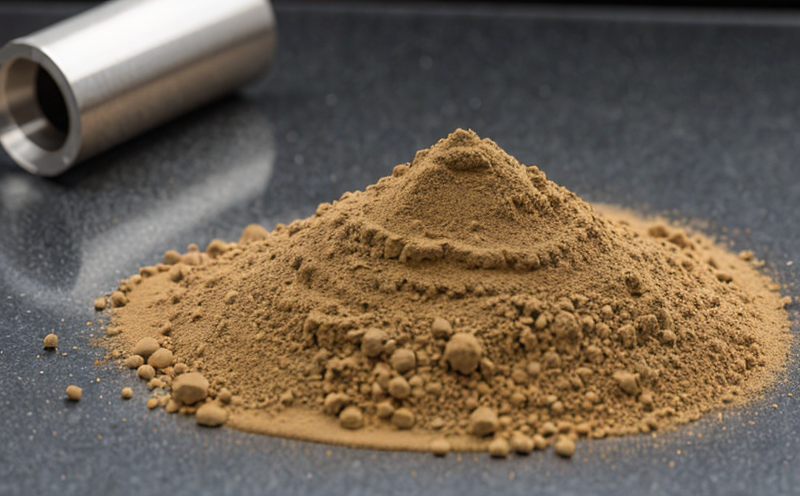ASTM E384 Microhardness Testing of Raw Materials
The ASTM E384 standard is a cornerstone in the field of materials testing and quality assurance, providing methodologies for determining the hardness of raw materials using microhardness testing techniques. This service ensures that manufacturers and suppliers can verify the mechanical properties of their raw materials, ensuring they meet stringent industry standards and customer expectations.
Microhardness testing is particularly valuable when dealing with fine-grained or thin-sectioned materials where other conventional hardness tests are not feasible. ASTM E384 allows for precise measurement down to a very small scale, making it ideal for evaluating the microstructure of raw materials that can impact product performance and reliability.
The process involves applying a controlled force to the surface of the material using a diamond indenter (typically Knoop or Vickers). The resulting indentation is measured under a microscope, allowing for accurate determination of hardness. This method ensures consistency across different raw material types, providing reliable data that can be used in quality control and research.
ASTM E384 microhardness testing supports various industries including aerospace, automotive, electronics, and medical devices where material integrity is paramount. By ensuring the accuracy of these tests, we contribute to safer and more efficient products. Understanding the hardness distribution within raw materials helps in optimizing manufacturing processes and improving product longevity.
The scope of ASTM E384 covers a wide range of raw materials including metals, ceramics, polymers, and composites. The test can be tailored to specific requirements ensuring that all relevant aspects are addressed. This service is crucial for industries where material quality directly influences the performance and safety of end products.
For instance, in aerospace applications, the hardness of titanium alloys used in engine components needs to be consistent across every batch. ASTM E384 ensures this consistency by providing precise measurements that can be traced back to international standards like ISO 6507-2 for Vickers microhardness and ISO 11839 for Knoop microhardness.
Similarly, in the automotive industry, the hardness of steel used in brake pads needs to withstand high temperatures and pressures. ASTM E384 helps ensure that these materials meet the required specifications by providing detailed reports on the hardness variations within each batch.
Why It Matters
The importance of ASTM E384 microhardness testing in raw material characterization cannot be overstated. This service ensures that manufacturers are able to produce high-quality products consistently, meeting both internal and external standards. Consistency is key when dealing with materials at the microscale where even small variations can significantly impact performance.
By using ASTM E384, industries benefit from enhanced product reliability and safety. In sectors like medical devices, for example, ensuring that the hardness of a material used in implantable parts meets stringent standards can prevent failures that could lead to serious health risks. The same applies to automotive components where consistent hardness ensures durability under stress.
The service also supports research and development by providing detailed insights into raw materials' microstructures. This knowledge is essential for optimizing manufacturing processes, improving product design, and developing new materials with enhanced properties. For quality managers and compliance officers, ASTM E384 offers a robust framework to ensure that their suppliers meet the necessary standards.
Moreover, this service supports global trade by ensuring that raw material specifications are met consistently across different regions and manufacturers. This consistency is vital for maintaining supply chain integrity and customer trust.
Scope and Methodology
The ASTM E384 standard specifies the procedures for performing microhardness tests on small areas of materials using a range of indenters, including Knoop and Vickers. The scope includes detailed instructions on sample preparation, test setup, force application, and measurement techniques.
The methodology involves preparing the specimen to ensure it is flat and clean before applying the specified force with an indenter. The resulting indentation is then measured under a microscope using specific magnification settings provided in ASTM E384. The test can be conducted at various loads depending on the material type, ensuring accurate results.
Acceptance criteria for ASTM E384 are stringent and are designed to ensure that only high-quality raw materials pass through testing. This includes setting limits on the acceptable range of hardness values and specifying conditions under which tests must be performed. Compliance with these standards is essential for maintaining product quality and reliability.
Industry Applications
| Industry | Application |
|---|---|
| Aerospace | Ensuring consistent hardness in engine components like titanium alloys. |
| Automotive | Maintaining durability of steel used in brake pads under stress. |
| Electronics | Guaranteeing the quality of materials used in semiconductor manufacturing. |
| Medical Devices | Safeguarding the integrity of implantable parts made from biocompatible materials. |
| Metalworking | Optimizing tool life and performance using high-carbon steel dies. |
| Ceramics | Evaluating the hardness of advanced ceramics used in cutting tools. |
| Plastics | Ensuring consistent quality in polymer-based composite materials. |
| Composites | Verifying the strength and durability of fiber-reinforced composites for aerospace applications. |
- Aerospace: Ensures that engine components like titanium alloys are consistently hard enough to withstand high temperatures.
- Automotive: Guarantees that brake pads made from steel can handle the stress and pressure of vehicle operation.
- Electronics: Helps in maintaining the quality of materials used in semiconductor manufacturing, ensuring reliable performance.
- Medical Devices: Ensures that implantable parts are made from biocompatible materials with consistent hardness for safety and reliability.
- Metalworking: Optimizes tool life by using high-carbon steel dies that can withstand repeated use without losing their hardness.
- Ceramics: Evaluates the hardness of advanced ceramics used in cutting tools, ensuring they have the necessary durability.
- Plastics: Ensures consistent quality in polymer-based composite materials, enhancing product performance and longevity.
- Composites: Verifies the strength and durability of fiber-reinforced composites for aerospace applications, ensuring safety and reliability.





